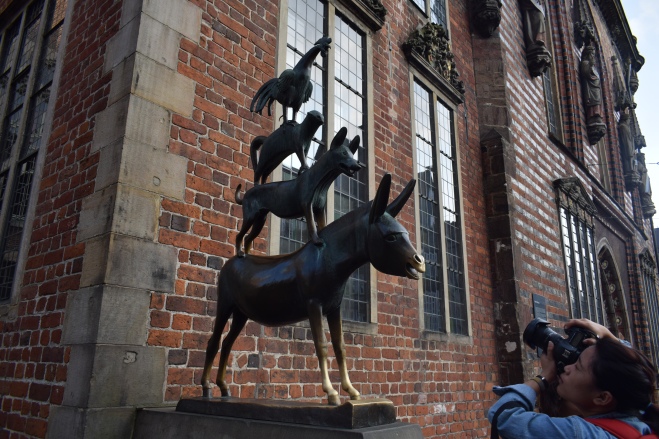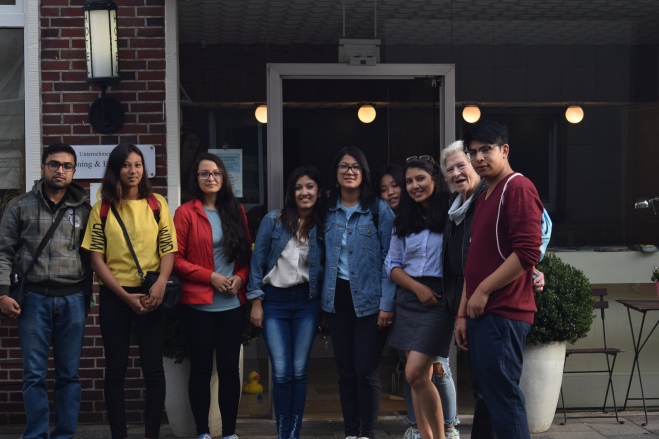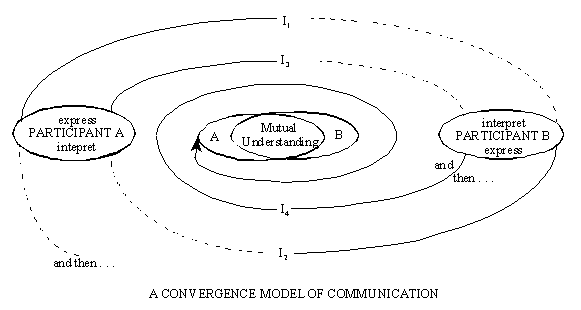Background
It is really important to have comparative understanding of different models of communication field because it will help us to understand the models effectively. Gaining knowledge would never have been easier if it weren’t for comparing. By comparing two models, we get to know the depth of the models and what are the similarities and differences between them.
Many flaws have been identified in the 1949 Shanon and Weavers communication model, therefore many other communication theories have been put forward as alternatives that fill in the blanks that the Shanon and Weaver model has. In the eastern perspective, Sadharanikaran model of communication is the first of its types and it is these models that shall be focused on this report, comparing the differences between them, analyzing their relative strengths and weaknesses.
MODEL A: Sadharanikaran Model of Communication
Sadharanikaran model of communication (SMC), was proposed by Dr. Nirmala Mani Adhikari on 2003. It is a systematic representation of communication process from a Hindu perspective. It illustrates how the communication parties interact in a system for the attainment of commonness or oneness. Sahridayata and Sahridayas are the core concepts upon which the meaning of sadharanikaran resides. The sender and receiver attain sahridayata or become sahridayas only when they accomplish the process of sadharanikaran. Thus, sadharanikaran is the attainment of sahridayata by communication process.
Sadharanikaran is rooted in Natyashastra of Bharata. Scholars widely believe that Bhattanayaka introduced the concept of sadharanikaran. He is credited for the use of the term in his commentary on Natyashastra to explain the concept of rasa. Sadharanikaran word is derived from the Sanskrit word sadharan; which means ‘commonality’ or ‘simplification’ in English. The true essence of sadharanikaran is to achieve commonness or oneness among the people. Sadharanikaran model is the first ever model of communication in diagrammatic form proposed from the East.
Sadharanikaran model comprises of the following elements:
- Sahridayas (Preshaka, i.e. sender and Prapaka, i.e. receiver)
- Bhava (Moods or emotions)
- Abhivyanjana (Expression or encoding)
- Sandesh (Message or information)
- Sarani (Channel)
- Rasaswadana (Firstly receiving, decoding and interpreting the message and finally achieving the rasa)
- Doshas (Noises)
- Sandarbha (Context)
- Pratikriya (Process of feedback)
Sahridayas are the people with a capacity to send and receive messages. They are the parties engaged in communication, and capable of identifying each other as sender and receiver of the process. If communication Is taken as a step-by-step process, which is just for the sake of easy understanding, the sahridaya-preshaka (sender), who has the bhavas (moods or emotions or thoughts) in mind, is the initiator of the process. It is the sahridaya-prapaka (receiver) with whom the bhavas are to be shared. He or she has to pass the process of rasaswadana. Abhivyanjana refers to the activities that a source goes to translate bhavas into a form that may be perceived by the senses. It can be understood as expression or encoding in English. Simplification is the essential dimension here. In the communication process; the complex concepts and ideas are simplified by the speaker(source) with illustrations and idioms appropriate for the understanding of the listener (receiver of the message).
With the completion of the process of abhivyanjana, bhavas are manifested as sandesha. In other words, sandeha is the outcome of abhivyanjana process. For the transmission of sandesha, there needs to be a sarani (channel or medium). The channels may be natural such as auditory, tactile, visual, olfactory and taste channels. They may be artifactual such as paintings, sculptures, letters, etc. Rasaswadana is the receiving of the message by the receivers, decoding it and finally enjoying the rasa of the sandesha.
Doshas are those noises which distort the message and leads to miscommunication. The model should be interpreted to include all of the noises, such as semantic, mechanical and environmental.
Sandarbha is context and the effectiveness of any message depends on the communication environment. Same message may have different meanings in different contexts.
Pratikriya refers to the responses of the receiver after receiving the message. It is the process of feedback, which allows the receiver to have active role in the communication process.
MODEL B: Shanon and Weaver Model of Communication
Shanon and Weaver model of communication was created in 1948 when Claude Elwood Shannon wrote an article “A Mathematical Theory of Communication” with Warren Weaver. The concepts in Shanon and Weaver model of communication are:
- Sender: Sender is the person who makes the message, chooses the channel and sends the message.
- Encoder(Transmitter): Encoder is the sender who uses the machine, which converts the message into signals or binary data. It might also directly refer to the machine.
- Channel: Channel is the medium used to send the message.
- Decoder(Receiver): Decoder is the machine used to convert signals or binary data into message or the receiver who translates the message from signals.
- Receiver (Destination): Receiver is the person who gets the message or the place where the message must reach. The receiver provides feedback according to the message.
- Noise: Noise is the physical disturbances like environment, people, etc.
For example, brain might be the sender, and our mouth might be the encoder which encodes to a particular language, air might be the channel, another person’s ear might be the receptor and his brain might be the decoder and receiver.
Similarly, air is the channel here, the noise present in his environment that disturbs them is the noise whereas his response is the feedback. There were only 5 components when the model was made. Noise was added later.
Comparative Analysis: Sadharanikaran Model of Communication and Shanon and Weaver Model of Communication
The Shanon and Weaver model is renowned for its simplicity. It deals simply with how communication travels from the transmitter to the receiver worrying only about the concept of noise scrambling the content of the message, regardless of it the meaning is still intact. It is considered by some to be too simple. For example, say the transmitter is speaking in French on a telephone connection that is crystal clear, and his message is received perfectly clear by the receiver, who is unable to speak French. According to Shanon and Weaver, the message can be classed as having been successfully sent, even though the receiver cannot speak French and therefore is unable to get any meaning out of the message.
Sadharanikaran on the other hand is better suited for real world communication.
The first and foremost difference between Sadharanikaran model of communication and Shanon and Weavers model of communication is, the first one is non-linear and the latter one is a linear model of communication. Sadharanikaran model accounts for feedback from the receiver’s side after the reception of the initial message whereas Shanon and Weavers model gives emphasis only to the sender who is actively transmitting messages to passive audiences. There is no feedback system to allow sender to be adjusted to receiver’s need. Shanon and Weavers model gives emphasis to the sender only whereas Sadharanikaran model says there is not also a thin line between sender and receiver, which is to say, they both are sahridayas who are completely equal to each other.
One of the problem with Shanon and Weavers model of communication is its lack of attention to the context of creating and receiving the message. Meaning can be different in different contexts. There are different situational, social, political, cultural, and historical contexts which can have influence on the interpretation of the message. This is the problem which is not prevalent in Sadharanikaran model of communication. It tells that the effectiveness of any message depends on the communication environment because same message may have different meaning in different contexts. Context is known as ‘sandarbha’ in Sadharanikaran model.
The notion of context in the process of communication makes Hindu concept of communication even more comprehensive. The importance of context is such that due to this factor meaning could be provided to the message even if the sender is not identified to the receiver. In the other words, it is due to context, the intended meaning of any message can be ascertained without determining the actual intention in the mind of the speaker just by taking contextual factors into account. Thus due to context a text can retain its ‘objective’ meaning. (Adhikary, 2010)
Sadharanikaran and Shanon and Weavers communication model consist differing view on the human relationships in the communication process. The people who are engaged in communication in Sadharanikaran model of communication are called sahridayas. They are not only preshakas (senders) and prapakas (receivers), they are sahridayas who have attained a special state called sahridayata. A sahridaya is a person in such a state of emotional intensity which is coequal or parallel to that of other(s) engaged in communication. (Adhikary, 2009, pp.74)
Thus, due to common faith the relationship between parties engaged in communication is harmonious in case of ritual model but in case of SMC sahridayata prevails even in complex hierarchies of castes, languages, cultures and religious practices. (Acharya, 2011)
In the case of Shanon and Weavers model, it is more technological than other linear models and it is more information-centered rather than meaning-centered, but this points to its limitations as a general model of human communication.
Noise and Channel are the common component in both of the models. Both these models agree that the message needs a channel or medium to be transmitted and during the transmission, various factors may interfere with the communication process, distort its meaning or even cause the complete failure of the entire communication process. These factors are called ‘Dosha’ in Sadharanikaran Model and ‘Noise’ in Shanon and Weavers Model.
The goal of Shanon and Weavers model of communication is to send communication messages most effectively with minimum errors. It is a transmission model of communication.
In the context of human communication, the goal of communication in Sadharanikaran model is achieving sharing of Bhavas and achieving mutual understanding. Here, sender and receiver are Sahridayas in true sense. But the goal of communication in the Hindu concept would not be limited to just this extent. Hinduism always emphasizes to achieve all of the purushartha chatustayas, that is, four goals of life: Artha, Kama, Dharma and Moksha. (Adhikary, 2008)
Therefore in conclusion we can see that the Shanon and Weaver model of communication is sufficient if one wishes to take a simplified look at communication and the way it works, but its lack of the necessary extraneous elements of communication make it next to useless in any real world scenario, representing, as they do, over-simplified models of how communication works. And whereas Sadharanikaran model of communication, being strong in every aspect and component it presents, is very useful Eastern model of communication.
References
Acharya, Amol. (2011, August). The Sadharanikaran and Ritual Model of Communication: A Comparative Study. Retrieved from http://www.academia.edu/6973536/THE_SMC_AND_RITUAL_MODEL_A_COMPARATIVE_STUDY_1_THE_SADHARANIKARAN_MODEL_AND_RITUAL_MODEL_OF_COMMUNICATION_A_COMPARATIVE_STUDY
Adhikary, N.M. (2008). The Sadharanikaran and Aristotle’s Model of Communication: A comparative study: Bodhi: An Interdisciplinary Journal, 2(1), 268-285.
Adhikary, N.M. (2009). An Introduction to Sadharanikaran model of Communication: Bodhi: An Interdisciplinary Journal, 3(1), 69-91.
Adhikary, N.M. (2010, January 3). An Introduction to Sadharanikaran Model of Communication. Retrieved from http://sadharanikarantheory.blogspot.com/2010/01/introduction-to-sadharanikaran-model-of.html




